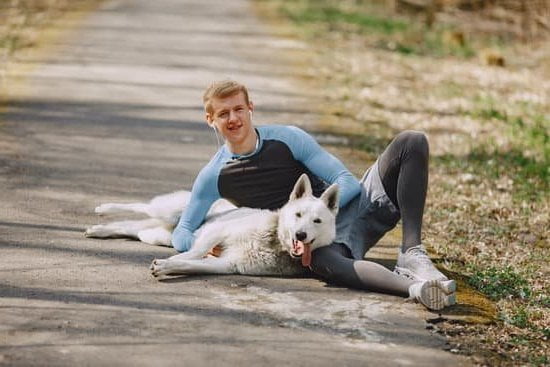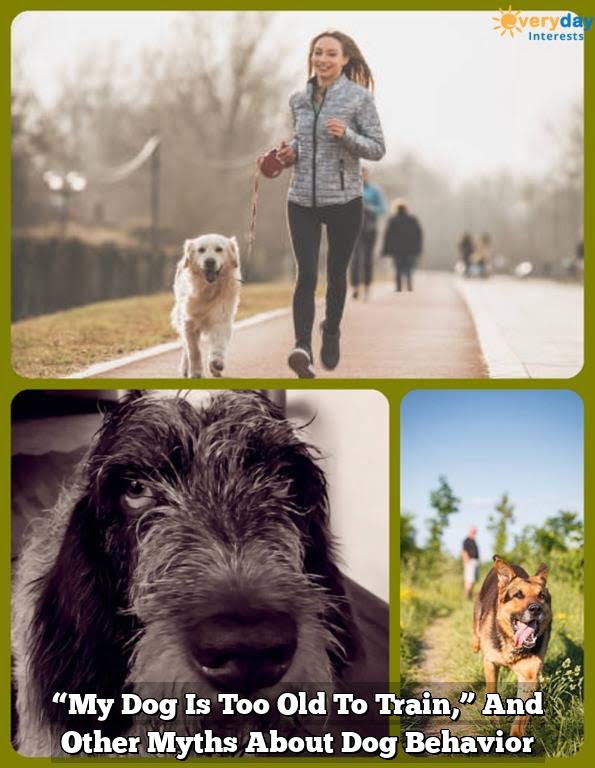Are you wondering, “What can I use to train my dog’s behavior?” Training your dog’s behavior is essential for creating a harmonious relationship and ensuring their safety. By investing time and effort into training, you can establish clear communication with your furry companion and address any behavioral issues effectively.
Setting the foundation for training your dog involves building a positive and trusting relationship. This lays the groundwork for successful training sessions and helps your dog feel secure and confident in their learning process. Establishing trust through positive interactions is key to achieving desired results in behavior training.
Basic training tools such as treats, clickers, and toys play a vital role in shaping your dog’s behavior. These tools can be used to reward good behavior, reinforce commands, and redirect unwanted behaviors effectively. By understanding how to utilize these tools correctly, you can create a positive learning environment for your dog and facilitate their progress in training.
Setting the Foundation
Establishing a positive and trusting relationship with your dog is crucial when it comes to training their behavior. Building a strong foundation based on love, respect, and clear communication will make the training process more effective and enjoyable for both you and your furry companion. Dogs thrive in environments where they feel safe, loved, and understood, so taking the time to nurture this relationship is key.
One of the most important things you can use to train your dog’s behavior is positive reinforcement. This technique involves rewarding your dog with treats, praise, or toys when they exhibit good behavior. By associating these rewards with desirable behaviors, you are encouraging your dog to continue behaving in a positive way. Consistency is key when using positive reinforcement, as it helps your dog understand what is expected of them and reinforces their good behavior over time.
In addition to positive reinforcement, another tool that can be helpful in setting the foundation for training is clear communication. Dogs rely heavily on cues from their owners to understand what is expected of them. Using consistent commands and body language will help your dog know what you want them to do.
Remember to always stay patient and calm during training sessions, as dogs can pick up on your emotions. By focusing on building a positive relationship with your dog through clear communication and consistent reinforcement, you will set the stage for successful behavior training in the future.
Basic Training Tools
Training your dog’s behavior requires the use of various tools to effectively communicate with your furry friend. One essential tool that you can use is treats. Treats serve as a powerful motivator for dogs and can be used to reward good behavior during training sessions. Make sure to choose treats that are small, tasty, and easy for your dog to consume quickly. This will keep your pup engaged and eager to learn.
Another useful tool for training your dog’s behavior is a clicker. Clicker training is a popular method that involves using a clicker device to create a distinct sound when your dog performs a desired behavior. The sound of the click marks the exact moment the behavior is correct, making it easier for your dog to understand what they are being rewarded for. Clicker training can be especially effective for teaching complex behaviors or shaping specific actions.
In addition to treats and clickers, toys can also be valuable tools for training your dog’s behavior. Toys can be used as rewards during training sessions or as interactive tools to engage your dog mentally and physically.
Interactive toys like puzzle feeders or tug toys can help keep your dog stimulated and focused during training. By incorporating a variety of tools, such as treats, clickers, and toys, into your training routine, you can create a fun and rewarding experience for both you and your furry companion.
| Training Tool | Usage |
|---|---|
| Treats | Reward good behavior, motivate learning |
| Clicker | Mark desired behaviors precisely, aid in teaching complex actions |
| Toys | Rewarding, engaging, keeps the dog focused during training sessions |
Positive Reinforcement Techniques
Here are some tools that you can use to implement positive reinforcement techniques in your training sessions:
- Treats: High-value treats are a great way to reward your dog for good behavior. It is important to use treats that your dog finds particularly tasty and rewarding to increase motivation.
- Clickers: Clicker training is a popular method that utilizes a small device that makes a clicking sound when pressed. The clicker marks the desired behavior, followed by giving the treat as a reward.
- Toys: Some dogs may be more toy-motivated than treat-motivated. Using their favorite toy as a reward can also be an effective way to reinforce positive behavior.
Remember, the key to using positive reinforcement effectively is timing. Make sure to reward your dog immediately after they exhibit the desired behavior so they can make the connection between the action and the reward. This will ultimately encourage them to repeat the behavior in the future.
Consistency is crucial when applying positive reinforcement techniques. By consistently rewarding good behavior and ignoring or redirecting unwanted behaviors, you are setting clear boundaries for your dog and reinforcing what is acceptable. With patience, practice, and dedication, you can successfully train your dog using positive reinforcement methods.
Correcting Behaviors
Unwanted behaviors in dogs can be frustrating for pet owners, but with the right approach, they can be corrected effectively. It is important to understand why your dog is exhibiting certain behaviors before attempting to address them. Common unwanted behaviors include excessive barking, jumping on people, and pulling on the leash during walks. By identifying the root cause of these behaviors, you can develop a plan to address and redirect them in a positive way.
When it comes to correcting behaviors in dogs, using positive reinforcement techniques can be incredibly effective. Rewarding good behavior with treats, praise, or toys can help your dog understand what is expected of them.
For example, if your dog tends to bark excessively when someone rings the doorbell, you can teach them to remain calm by rewarding them for staying quiet when the doorbell rings. Consistency is key when it comes to using positive reinforcement techniques – make sure to reward good behavior every time it occurs.
In addition to using positive reinforcement techniques, it is also important to redirect unwanted behaviors in a clear and consistent manner. For example, if your dog jumps on visitors when they enter your home, teach them an alternative behavior such as sitting or lying down when someone approaches.
By redirecting their attention and rewarding the desired behavior, you can help your dog understand what is acceptable. Remember that addressing unwanted behaviors takes time and patience – be sure to stay consistent with your training methods and seek professional help if needed.
Consistency Is Key
Developing a Routine
Consistency is crucial when it comes to training your dog’s behavior. One of the first steps in establishing consistent training routines is developing a daily schedule for training sessions.
This schedule should include short, frequent training sessions that focus on specific behaviors you want to reinforce or change in your dog. By setting aside dedicated time each day for training, you can create a routine that helps both you and your dog understand the expectations and goals of the training process.
Using the Same Commands and Cues
Another key aspect of consistency in dog training is using the same commands and cues every time you work with your dog. Whether you are teaching basic obedience commands or addressing unwanted behaviors, using consistent language and signals helps your dog understand what is expected of them.
For example, if you use “sit” as the command for sitting, make sure everyone in your household uses the same word to avoid confusing your dog. Consistency in communication is essential for effective training and clear understanding between you and your furry friend.
Maintaining Consistent Rewards
In addition to establishing a routine and using consistent commands, it is important to maintain consistent rewards during training sessions. Whether you are using treats, praise, or playtime as rewards, make sure to deliver them promptly and consistently when your dog exhibits the desired behavior.
This positive reinforcement helps strengthen the connection between good behavior and rewards in your dog’s mind, making them more likely to repeat that behavior in the future. Consistent rewards also establish a fair and predictable environment for your dog, enhancing their learning experience and motivation to engage in training activities.
Professional Training Services
Professional dog training services can be a valuable resource for pet owners who may need assistance with more specialized training needs. While basic obedience training can often be done at home with the right tools and techniques, certain behavioral issues or advanced skills may require the expertise of a professional trainer. These professionals have the knowledge and experience to address specific behaviors and tailor training methods to suit your dog’s individual needs.
One of the benefits of enlisting the help of a professional dog trainer is their ability to identify the root cause of behavior problems and develop a customized training plan to address them effectively. Whether your dog is exhibiting aggression, fearfulness, separation anxiety, or any other challenging behavior, a trainer can work with you and your pet to overcome these issues in a safe and structured manner.
Additionally, trainers can provide guidance on how to modify your own behavior to better support your dog’s learning process.
When choosing a professional dog training service, it’s important to do your research and select a reputable trainer who uses positive reinforcement methods. Look for credentials, reviews from past clients, and observe how the trainer interacts with dogs in their care.
By investing in professional training services, you are not only helping your dog learn new behaviors but also strengthening the bond between you and your furry companion. Remember that ongoing training and consistency at home are key components of ensuring long-term success in modifying your dog’s behavior.
| Benefit | Example |
|---|---|
| Identifying root cause of behaviors | A professional trainer identifies that a dog’s aggression stems from fear and designs a training plan accordingly. |
| Customized Training Plan | A specialized plan is created by the trainer to help a dog overcome separation anxiety through desensitization techniques. |
| Positive Reinforcement Methods | The trainer focuses on rewarding good behavior with treats and praise instead of punitive measures. |
Training for Different Behaviors
Addressing Barking Behavior
Barking can be a common behavior concern for many dog owners. To address excessive barking, it is important to first determine the root cause. Is your dog barking out of boredom, fear, or excitement?
Once you identify the trigger, you can start implementing training methods to address the behavior. One effective technique is teaching your dog the “quiet” command by rewarding them when they stop barking on cue. Additionally, providing mental and physical stimulation through toys and exercise can help reduce excessive barking.
Managing Jumping Behavior
Jumping up on people can be a natural behavior for dogs seeking attention or expressing their excitement. To manage jumping behavior, it is essential to teach your dog an alternative behavior such as sitting or staying calm when greeting people. Consistency is key in training, so make sure to reward your dog when they exhibit the desired behavior.
Using treats and positive reinforcement techniques can help reinforce the desired behavior over time. It’s also important to communicate with guests and visitors on how to respond appropriately to prevent reinforcing jumping behavior unintentionally.
Improving Leash Pulling
Leash pulling during walks can be frustrating for both you and your dog. Fortunately, there are training methods that can help improve leash manners. One effective approach is teaching your dog loose leash walking by rewarding them when they walk calmly beside you without pulling.
Using tools such as front-clip harnesses or head halters can also aid in reducing pulling behaviors during walks. Consistent training sessions and patience are crucial in teaching your dog proper leash etiquette. Remember to always make walks enjoyable experiences for both you and your furry companion by incorporating playtime and rewards into your routine.
By tailoring training methods for specific behaviors such as barking, jumping, and leash pulling, you can effectively address these challenges and strengthen the bond with your canine companion while promoting good behavior overall. Remember that every dog is unique, so it may take time and patience to see progress. With dedication and positive reinforcement techniques, you can help your furry friend become a well-behaved member of your family.
Ongoing Training
In conclusion, ongoing training is essential in reinforcing good behavior and strengthening the bond between you and your dog. Consistency is key when it comes to training your furry companion, as it helps them understand what is expected of them and builds trust between the two of you. By consistently practicing positive reinforcement techniques and addressing unwanted behaviors effectively, you can shape your dog’s behavior in a positive way.
It is important to remember that training is a lifelong process, not something that ends once your dog learns a few basic commands. Regular training sessions help keep your dog’s skills sharp and reinforce good behavior patterns. This ongoing training also provides mental stimulation for your dog, keeping them engaged and preventing boredom or behavioral issues.
If you find yourself struggling with training or facing more complex behavior issues with your dog, don’t hesitate to seek out professional training services. Trainers have the expertise to assess your dog’s specific needs and develop a customized training plan to address any challenges. With dedication, consistency, and the right tools and techniques, you can successfully train your dog’s behavior and build a strong bond based on trust and mutual respect.
Frequently Asked Questions
How Do I Train My Dog to Behave Better?
Training your dog to behave better involves consistency, positive reinforcement, and patience. Establish clear rules, use rewards like treats or toys, and practice commands regularly. Consider enrolling in obedience classes for professional guidance.
How Do I Correct Bad Dog Behavior?
Correcting bad dog behavior requires understanding the root cause of the behavior. Avoid punishment and focus on redirection to more desirable behaviors. Use techniques like ignoring unwanted behavior or removing sources of reinforcement for it.
How Do You Discipline a Dog Behavior?
Discipline your dog’s behavior by setting boundaries and reinforcing them consistently. Use firm but gentle methods such as verbal cues, timeouts, or redirecting attention. Never resort to physical punishment, as it can harm the bond between you and your pet.

Welcome to the blog! I am a professional dog trainer and have been working with dogs for many years. In this blog, I will be discussing various topics related to dog training, including tips, tricks, and advice. I hope you find this information helpful and informative. Thanks for reading!





